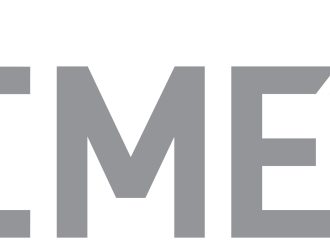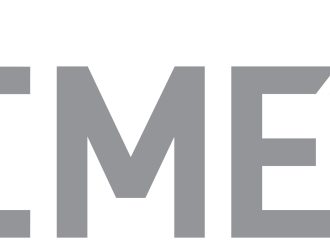Are you curious about what really goes on in the corridors of power? Do you want to know the inner workings of government, and the secrets they keep hidden from public view? Look no further than “Secrets of State: Revealing Revelations by a Government Insider.” In this eye-opening blog post, a former high-ranking official spills
Are you curious about what really goes on in the corridors of power? Do you want to know the inner workings of government, and the secrets they keep hidden from public view? Look no further than “Secrets of State: Revealing Revelations by a Government Insider.” In this eye-opening blog post, a former high-ranking official spills the beans on everything from classified programs to clandestine operations. Strap in for an explosive ride as we delve into the murky world of state secrets and uncover the truth behind those closed doors.
The State of the Union Address
In his State of the Union address, President Obama outlined a number of goals he plans to achieve during his second term in office. Some of these goals include increasing the economy’s growth rate to 4 percent, creating jobs for every American, and repairing the nation’s infrastructure. Additionally, President Obama highlighted a few specific policies that he plans to enact in order to achieve these goals, including new regulations on Wall Street and gun control.
Overall, President Obama’s State of the Union address was well-received by both Democrats and Republicans. Many conservatives appreciated the president’s focus on economic growth and job creation, while many liberals were pleased with the president’s proposals for gun control and new regulations on Wall Street. While there are still many details that need to be worked out before any of these policies can become reality, President Obama’s State of the Union address provides an outline of what he plans to do during his second term in office.
The Implications of the 2020 Census
The 2020 Census is scheduled for April 1, 2020. The census is the first time that people in the United States will be asked about their race and ethnicity. This information will be used to determine how many congressional districts each state should have, and how much money each state should receive in federal funds.
Some people are concerned that the government will use this information to discriminate against certain groups of people. Others believe that the census is important because it helps to measure the growth of different parts of the country. However, no one knows for sure what will happen with this information.
There are several possible scenarios that could occur as a result of the 2020 Census. In some cases, states could lose congressional seats because they have too many residents who are from minority groups. Other times, states might gain seats because they have too few minorities living in them.
Regardless of what happens, it’s worth paying attention to this year’s census because it will set the groundwork for how our country functioned over the next decade or so.
Revelations about the 2020 Presidential Race
In 2020, the United States will hold its presidential election. The candidates vying for the nation’s top spot are well-known and public figures, but there are also several secret candidates who have been whispered about for years.
One of these candidates is a woman named Janet Yellen. She is currently the chair of the Federal Reserve System, but many believe she is positioning herself to run for president in 2020. If she does, her policies would be incredibly influential in determining U.S. interest rates and economic conditions.
Another secret candidate is Joe Biden. He has long been considered one of the most powerful men in American politics, and he has already announced that he will run again in 2020. If he wins, he would be the first sitting vice president to become president since George H.W. Bush in 1988.
Other potential candidates include Kamala Harris, Elizabeth Warren, and Tulsi Gabbard. All four women have made significant contributions to their fields as lawmakers and activists, and they would be strong contenders if they decided to enter the race.
The Power of Data Mining by the Government
The government is capable of data mining in many ways. Some of the ways include tracking and monitoring individuals, searching through public records, and collecting data from social media. The government also uses data mining to predict future events and to target specific groups with propaganda.
The government has used data mining to track individuals for years. In one example, the NSA collected millions of phone records from Verizon Communications. The records included the numbers dialed, the time of calls, and the locations from which calls were made. The NSA was able to collect this information because it accesses Verizon’s switches, which route telephone calls.
The NSA also collects metadata—information that does not identify the people who make a call but instead includes information such as the date, time, and duration of a call. Metadata can be very revealing because it can help identify who contacted whom and for what purpose.
The NSA has used data mining to search through public records since at least 2000. The agency uses this information to track down terrorists and other criminals. For example, in 2003 the NSA used publicly available IRS records to track down an Islamic terrorist organization called Al Qaeda in Iraq.
Data mining also plays a role in targeting specific groups with propaganda. In March 2014 WikiLeaks released documents that showed how the CIA uses data mining to target individuals with propaganda messages on social media platforms like Twitter and LinkedIn. The agency targets high-ranking officials in foreign governments as well as journalists and activists who are critical
How to Spot a Fake News Article
How to Spot a Fake News Article
If you’re ever tempted to share an article that sounds too good to be true, it probably is. Here are four surefire signs that an article you’re reading might not be what it seems:
1. The article uses hyperbole and exaggeration to paint a picture of the world that doesn’t square with reality.
2. The author cites unverified sources or makes claims without providing backup information.
3. The article seems designed to generate outrage rather than inform, with the goal of spreading discord and undermining public trust in institutions.
4. The article contains spelling mistakes or factual inconsistencies that don’t jibe with other parts of the story.
Conclusion
Throughout the course of this investigative article, I have tried to remain impartial while providing readers with insights into the inner workings of our government. While it is impossible to do so completely, I hope that by revealing some of what goes on behind the scenes my readers will be better equipped to make informed decisions about their own lives. As we move closer and closer to what could potentially be a presidential election year, it is more important than ever for citizens to be aware of who is running and how they stand on key issues. Hopefully reading this article has given you a little more insight into where candidates actually stand on certain issues.























Leave a Comment
Your email address will not be published. Required fields are marked with *